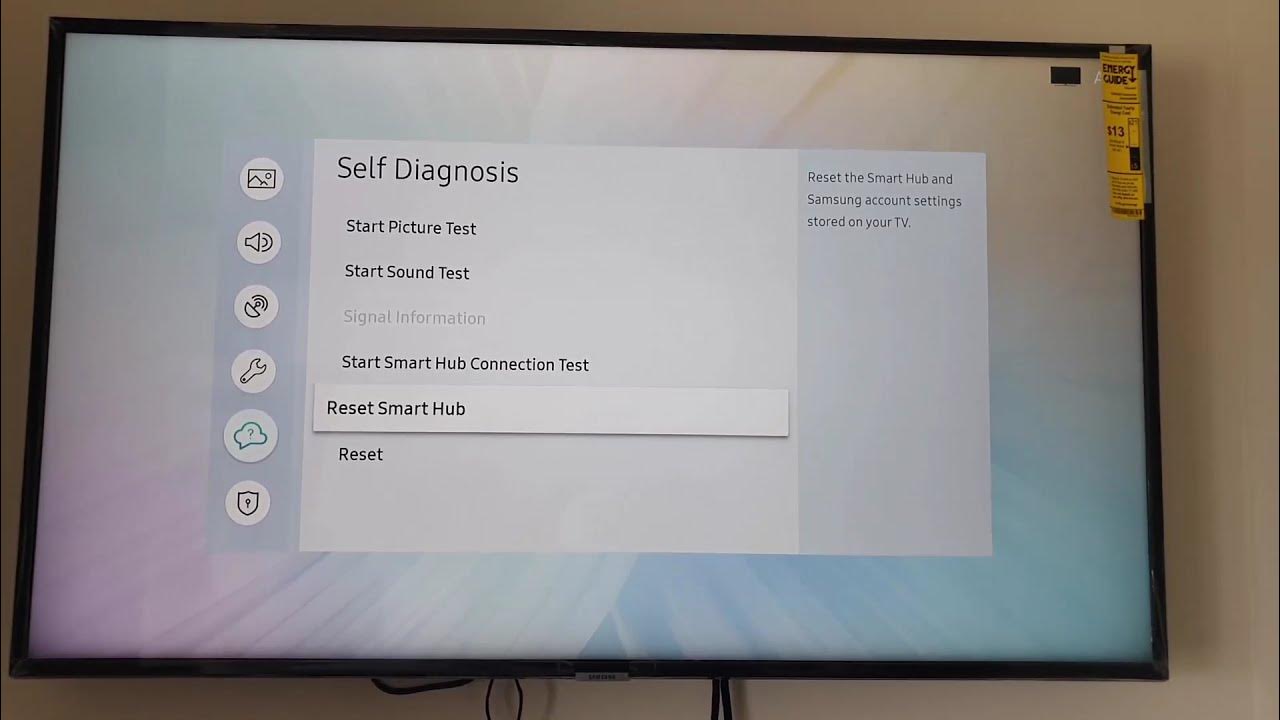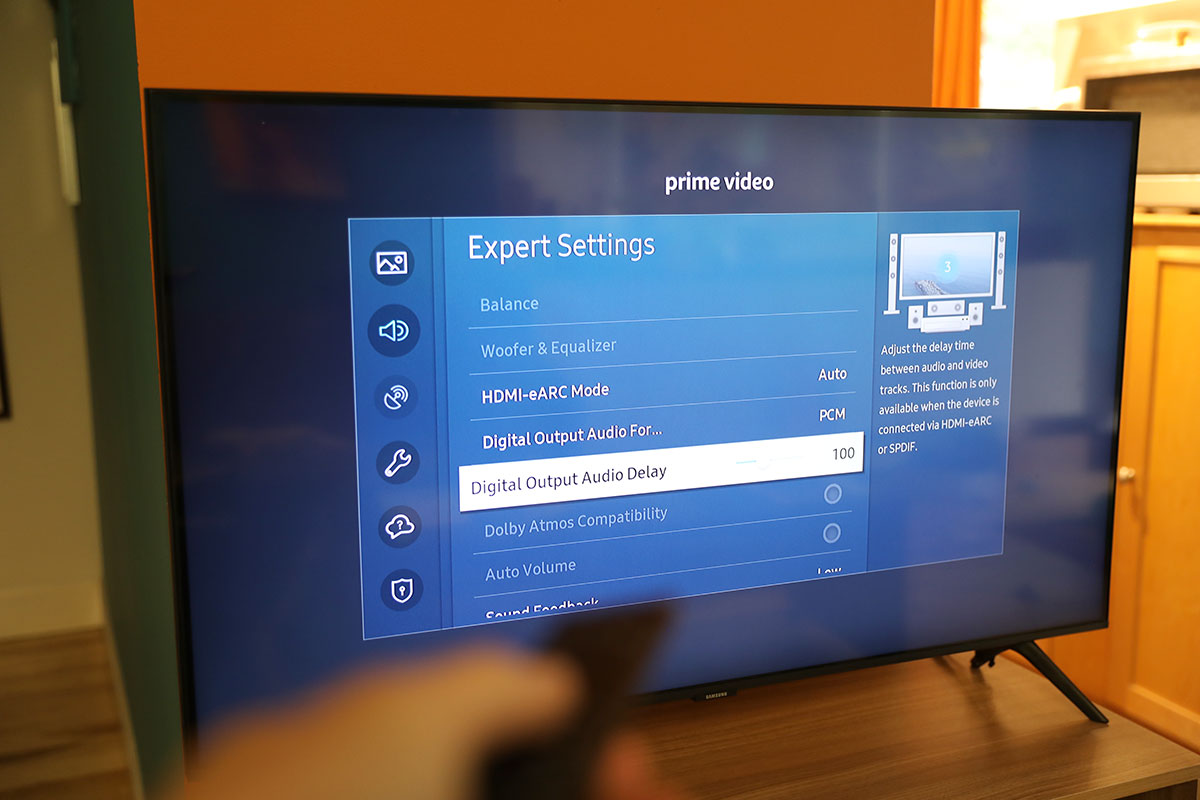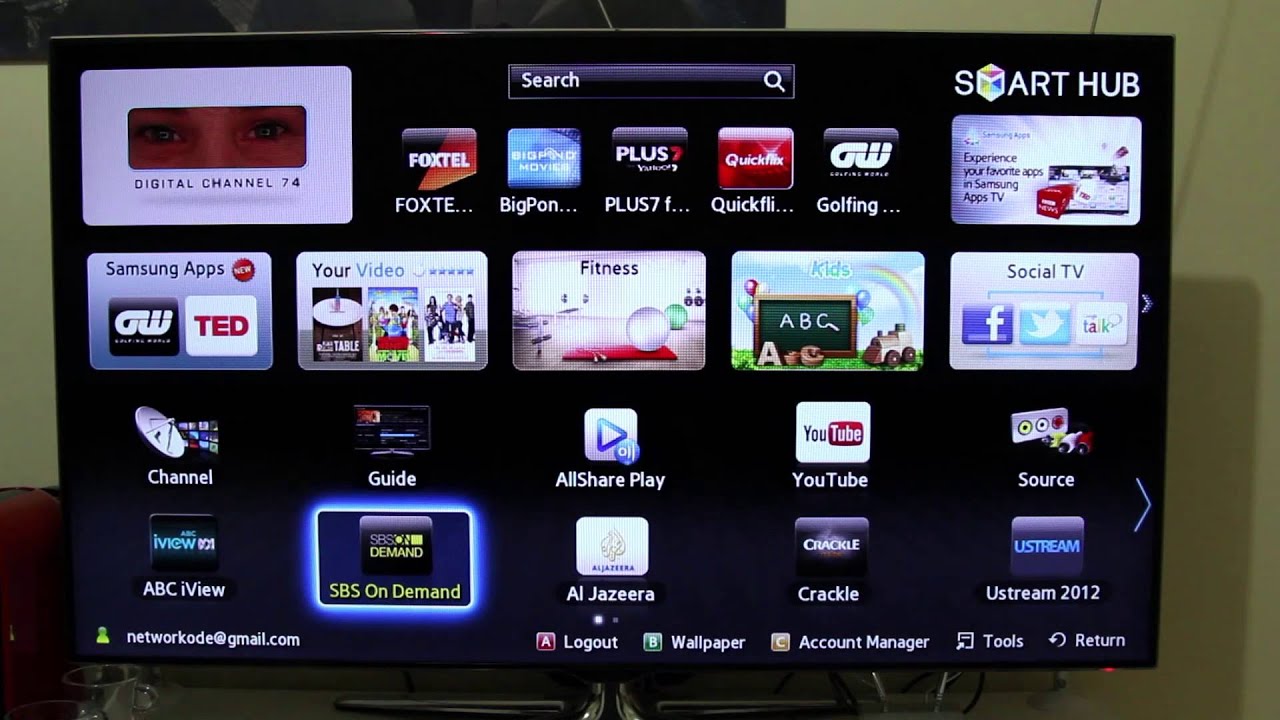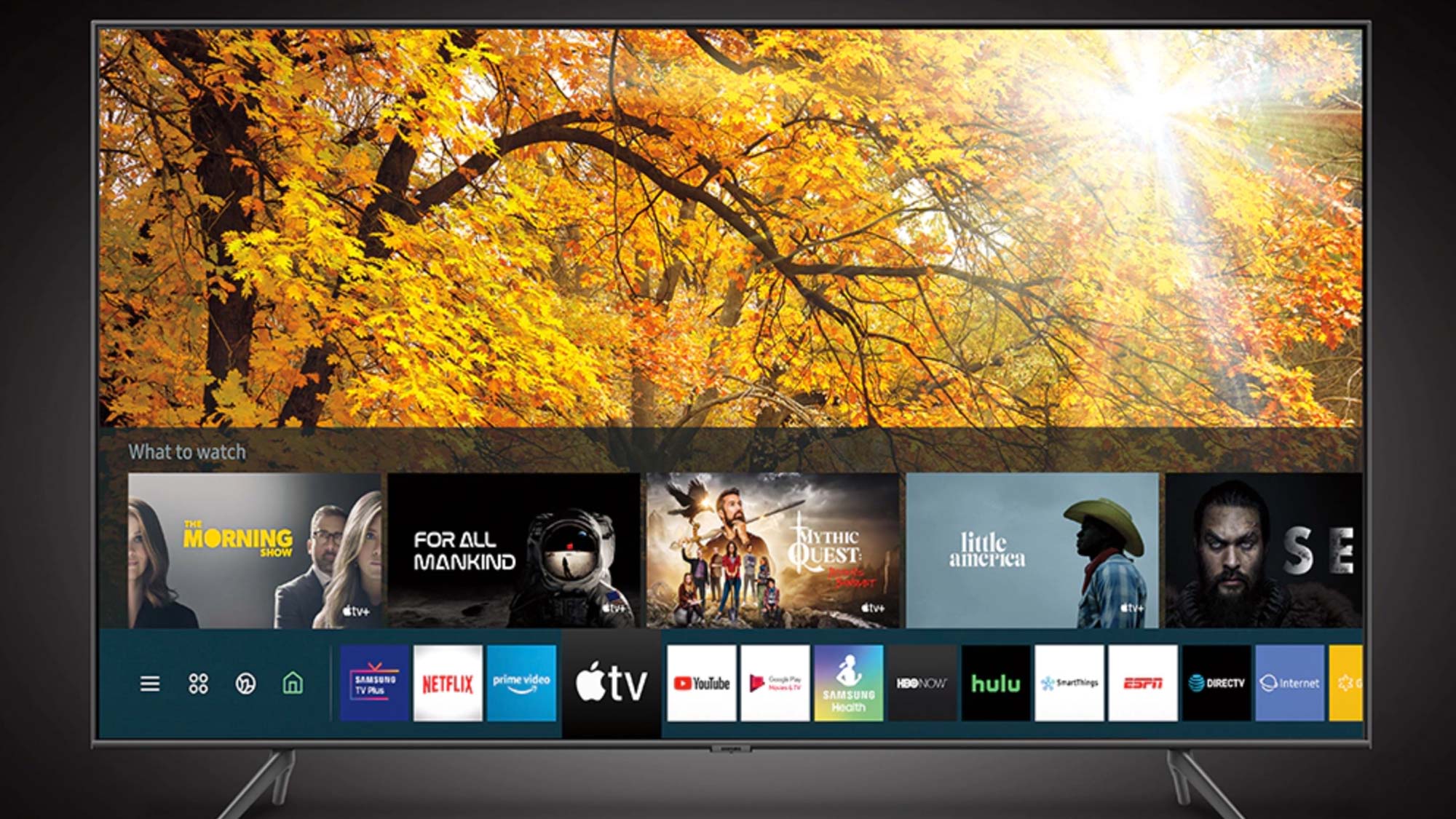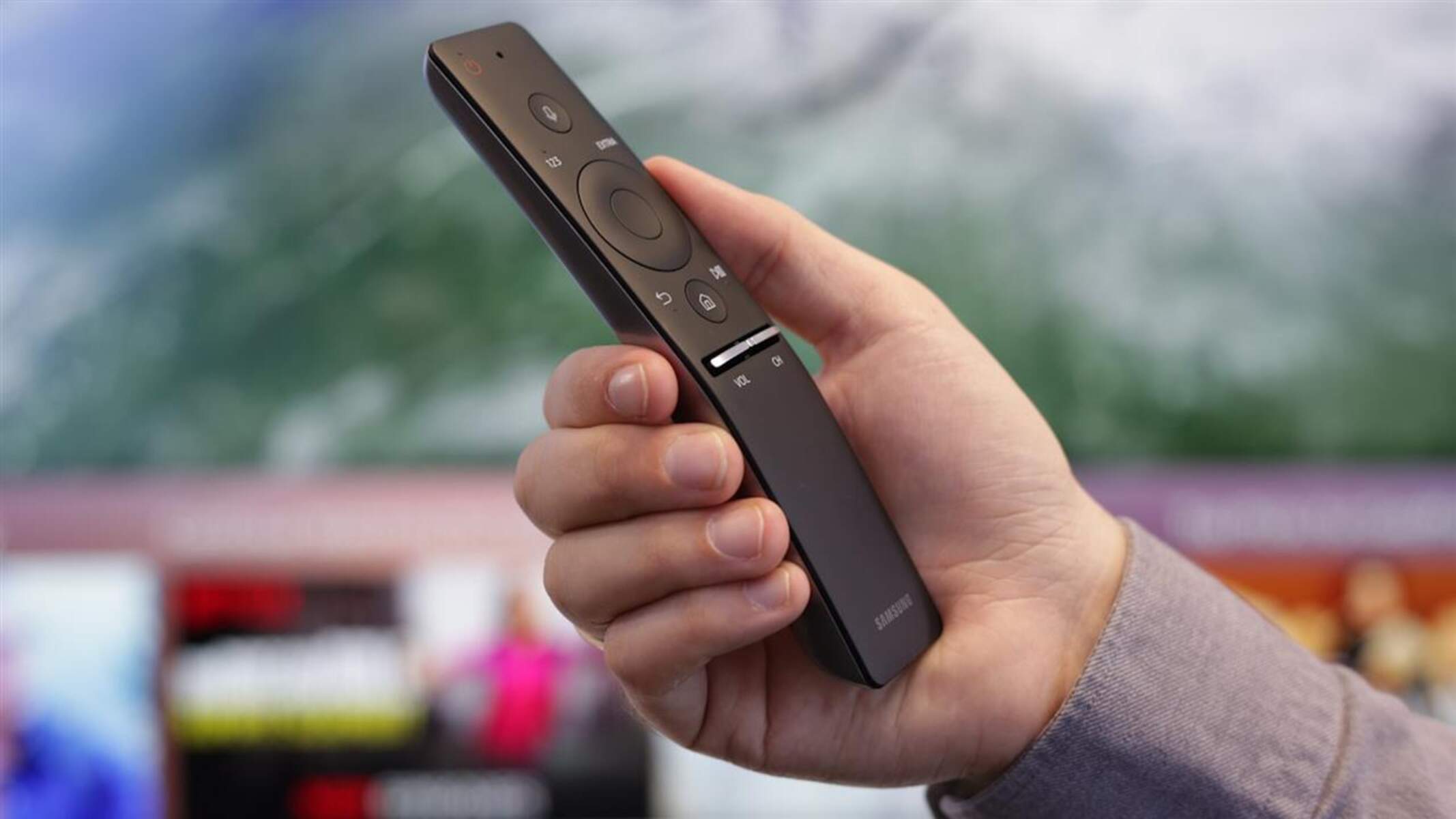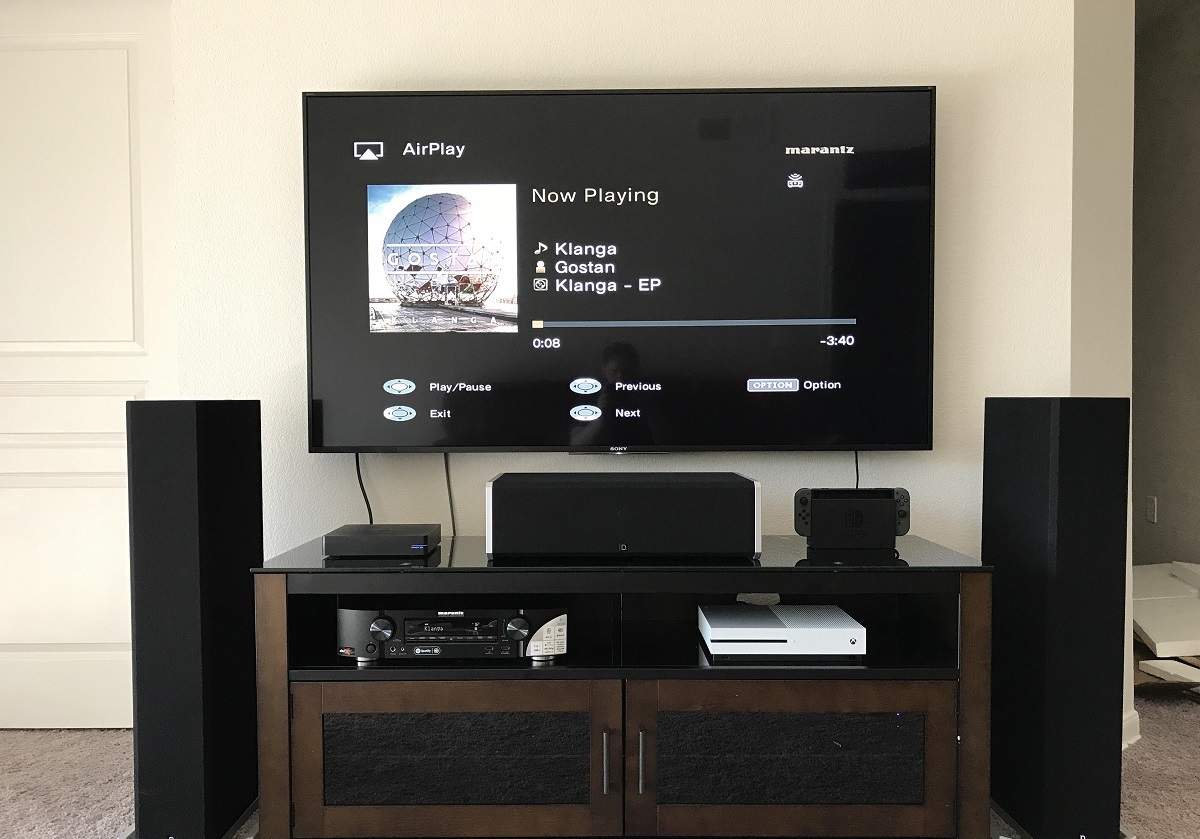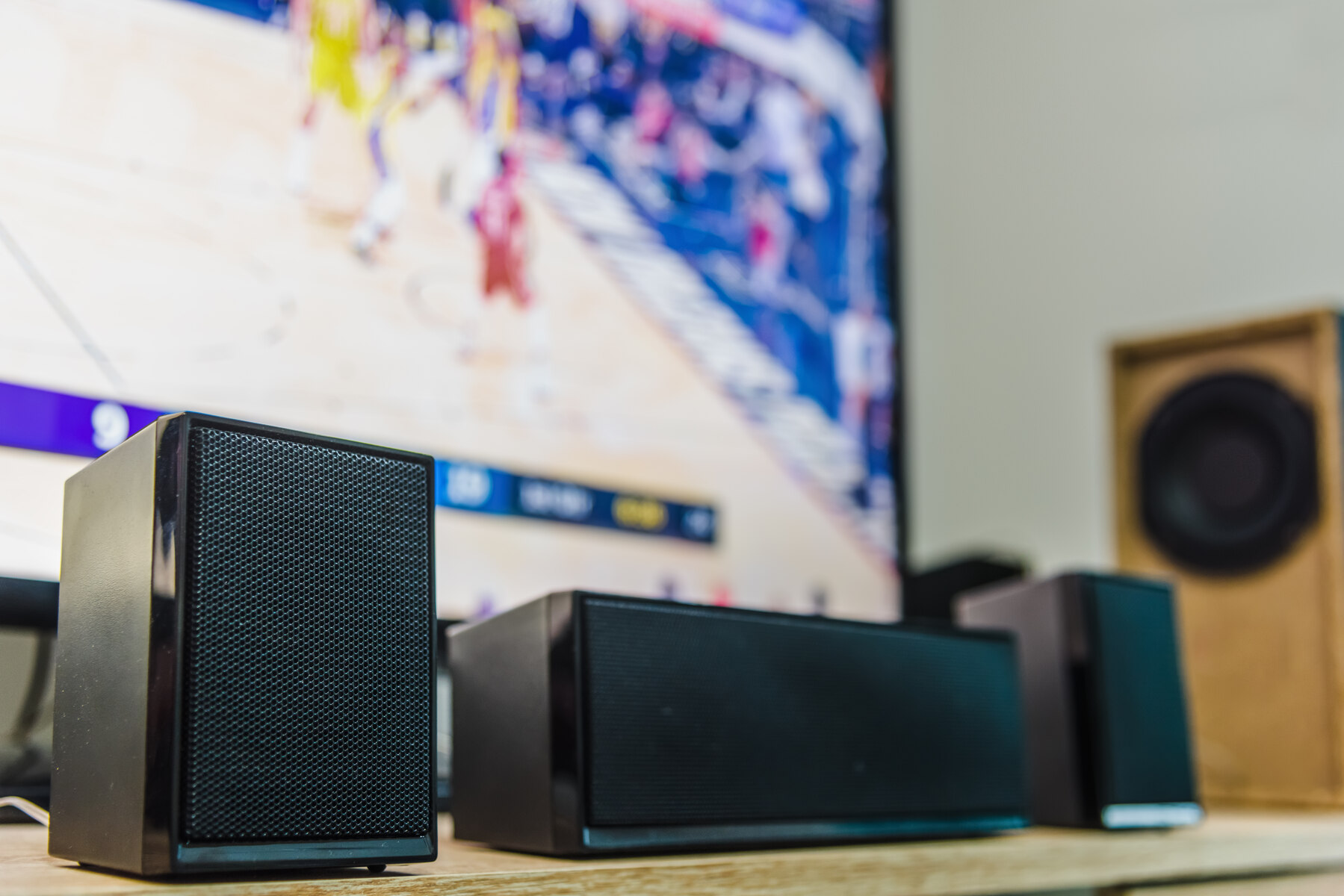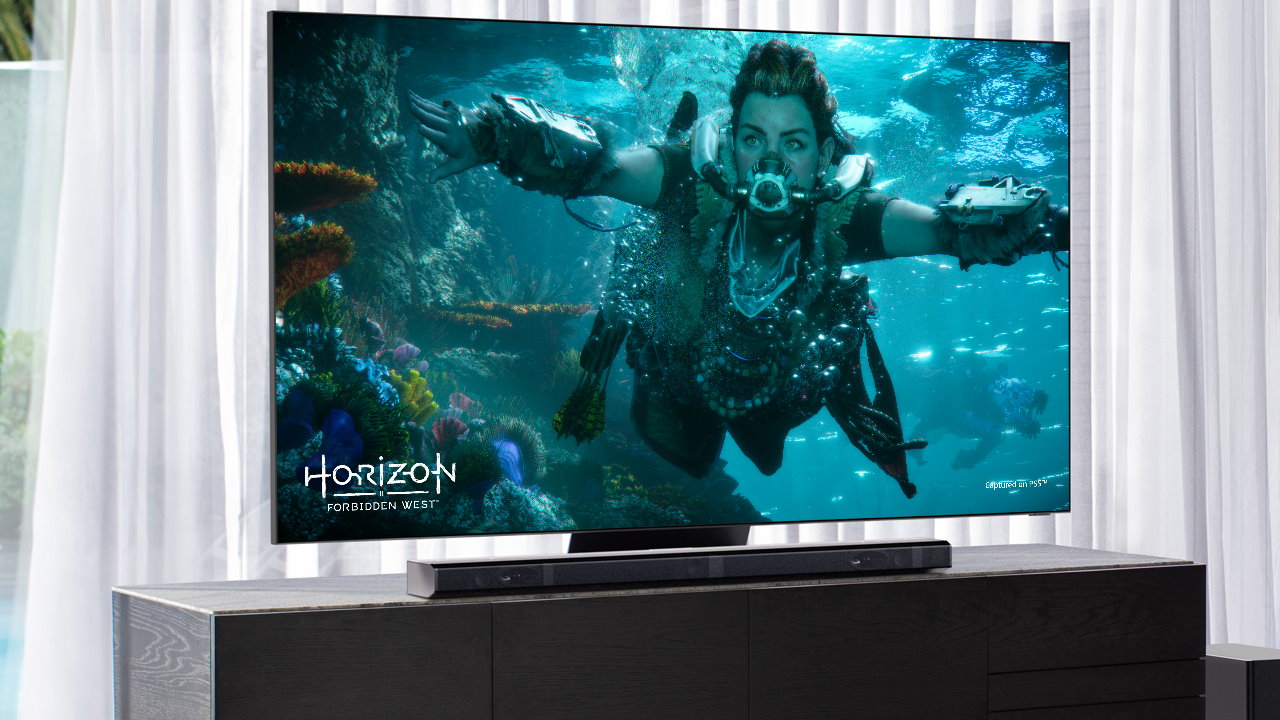Possible Reasons for No Sound on Your Samsung Smart TV
When you encounter no sound on your Samsung Smart TV, it can be quite frustrating. However, there are several possible reasons for this issue, and understanding them can help you troubleshoot and fix the problem. Here are some common causes for the lack of sound on your Samsung Smart TV:
- Volume and Mute Settings: The first thing you should check is the volume level and mute settings on your TV. Sometimes, the volume may be set too low or the TV might be muted.
- Connection and Cable Setup: Ensure that all audio cables are securely plugged into the correct ports on both your TV and external devices. Loose or faulty connections can result in no sound.
- TV Firmware: Outdated firmware can cause various problems, including audio issues. Check for any available firmware updates for your Samsung Smart TV and install them if necessary.
- Restart or Reset: Occasionally, a simple restart or reset of your TV can resolve audio problems. Try turning off your TV, unplugging it from the power source, waiting for a few minutes, and then plugging it back in.
- Audio Output Settings: Incorrect audio output settings can result in no sound or audio coming from the wrong source. Access your TV’s settings menu and ensure that the audio output is set to the correct option (e.g., TV speakers or external audio device).
- Surround Sound Settings: If you have a surround sound system connected to your TV, check the audio settings to make sure it is configured properly. Incorrect surround sound settings can cause issues with audio playback.
- External Devices’ Audio Settings: If you are using external devices (such as a cable box or Blu-ray player), make sure their audio settings are correctly configured. Incorrect settings on external devices can affect the audio output on your TV.
- Troubleshoot the Soundbar or Audio Receiver: If you use a soundbar or audio receiver with your Samsung Smart TV, check their settings and connections. Make sure the devices are powered on, properly connected, and set to the correct input source.
If you have tried all of the above troubleshooting steps and are still experiencing no sound on your Samsung Smart TV, it’s advisable to contact Samsung Support for further assistance. They can provide you with personalized guidance to resolve the issue and get your TV’s audio back up and running.
Check the Volume and Mute Settings
When you encounter no sound on your Samsung Smart TV, the first and simplest step is to check the volume and mute settings. It might seem obvious, but often the issue can be as simple as a muted TV or a low volume level. Here are some steps to follow:
- Check the volume level: Press the volume up button on your TV remote or use the volume control on the TV itself to increase the volume level. Make sure it’s not set too low or muted entirely.
- Confirm the mute status: Look for a mute icon or indicator on the screen or check the mute button on your TV remote. If the mute option is enabled, press the mute button again to restore the sound.
- Check the external audio system: If you have an external audio system, such as a soundbar or AV receiver, ensure that its volume is not set too low or muted. Adjust the volume accordingly and make sure it’s not conflicting with the TV’s audio settings.
- Inspect the TV settings: Access the TV menu and navigate to the sound or audio settings. Verify that the internal speakers are enabled and not set to external audio output only. Adjust any volume-related settings that may be affecting the sound output.
- Perform a soft reset: Sometimes, a software glitch can cause the volume controls to malfunction. To fix this, turn off the TV and unplug it from the power source. Leave it unplugged for a few minutes, then plug it back in and turn it on. Check if the volume and mute settings are now functioning correctly.
By verifying the volume and mute settings on your Samsung Smart TV, you can eliminate the possibility of a simple oversight causing the sound issue. It’s a quick and straightforward step that should be the first troubleshooting measure to undertake.
Ensure Proper Connection and Cable Setup
When you experience no sound on your Samsung Smart TV, it is important to ensure that your connections and cable setup are correct. Sometimes, a loose or incorrect cable connection can result in audio issues. Follow these steps to check your connections:
- Inspect audio cables: Begin by examining the audio cables that connect your TV to external devices such as cable boxes, game consoles, or sound systems. Make sure the cables are properly plugged into the correct audio input/output ports on both the TV and the external device.
- Tighten connections: Once you have verified that the cables are plugged in correctly, ensure that the connections are secure. Gently wiggle the cables to see if there is any movement or looseness. If you find a loose connection, firmly push the cable into the port until it clicks into place.
- Try different cables: If tightening the connections doesn’t solve the issue, try using different audio cables. Sometimes, cables can become faulty or damaged, resulting in no sound. Swap out the cables and see if the audio problem persists.
- Check HDMI cables: If you are using HDMI cables, make sure they are high-speed cables that support audio transmission. Additionally, ensure that the HDMI ports on both the TV and the external device are HDCP-compliant (High-bandwidth Digital Content Protection).
- Eliminate unnecessary devices: If you have multiple devices connected to your TV, disconnect any devices that are not currently in use. Having too many devices connected at once can sometimes cause audio conflicts or signal interruption.
- Test with a different device: If possible, connect a different audio source, such as a DVD player or gaming console, to the TV using the same audio cables. This will help determine if the problem lies with a specific device or the TV itself.
By ensuring proper connection and cable setup, you can eliminate any potential audio issues caused by faulty or loose connections. Taking the time to check and secure your audio cables can save you from unnecessary troubleshooting and help restore the sound on your Samsung Smart TV.
Update the TV Firmware
If you’re experiencing no sound on your Samsung Smart TV, it could be due to outdated firmware. Firmware is the software that runs on your TV and controls its functionality. Updating the firmware can often resolve various issues, including audio problems. Here’s how you can update the firmware on your Samsung Smart TV:
- Check for updates: Go to the Settings menu on your Samsung Smart TV using the remote control. Look for the “Support” or “System” section and navigate to “Software Update” or “Firmware Update.”
- Automatic update: Many Samsung Smart TVs have the option to enable automatic firmware updates. If this option is available, you can simply select it and allow the TV to check for updates and install them automatically when available.
- Manual update: If the automatic update is not available or not successful, you will need to manually update the firmware. Visit the official Samsung website and search for the support page for your specific TV model. Look for the firmware updates section and download the latest firmware file for your TV.
- USB update: Once you have downloaded the firmware file, copy it to a USB flash drive. Insert the USB drive into the USB port on your TV. From the TV’s menu, navigate to the software update section and choose the option to update firmware from USB. The TV will detect the firmware on the USB drive and guide you through the update process.
- Follow on-screen instructions: During the firmware update process, follow the on-screen instructions carefully. It’s important not to power off the TV or remove the USB drive until the update is completed. Interrupting the update can lead to system errors or even permanent damage to your TV.
By updating the firmware on your Samsung Smart TV, you ensure that your TV has the latest software enhancements and bug fixes. This can potentially resolve any audio issues and improve overall system performance.
Restart or Reset the TV
If you’re facing no sound on your Samsung Smart TV, a simple restart or reset of the TV can often help resolve the issue. Restarting the TV can clear temporary glitches or errors that may be impacting the audio system. Here are the steps to follow:
- Restart the TV: Begin by turning off the TV using the remote control or the power button located on the TV itself. Once the TV is off, unplug it from the power source. Wait for a few minutes to allow any residual power to dissipate.
- Reset the TV: After waiting for a few minutes, plug the TV back into the power source and turn it on. Use the remote control to access the settings menu and look for the “Reset” option. Depending on your Samsung Smart TV model, the reset option may be under the “Support” or “System” section. Select the reset option and follow the on-screen prompts to reset the TV to its default settings.
- Perform a soft reset: If your TV does not have a reset option in the menu, you can perform a soft reset by holding down the power button on the TV itself for 10-15 seconds. This will force the TV to power off and then restart.
- Retest the audio: Once the TV has restarted or been reset, check if the sound has been restored. Adjust the volume settings and ensure that the mute option is disabled. Test the audio on different channels or audio sources to confirm that the problem has been resolved.
Restarting or resetting the TV can help clear minor software glitches and restore the audio functionality. It is a simple troubleshooting step that can be performed without any technical expertise. If the no sound issue persists even after restarting or resetting the TV, further troubleshooting steps may be required.
Check the Audio Output Settings
If you are experiencing no sound on your Samsung Smart TV, it is essential to check the audio output settings. Sometimes, incorrect settings can cause the audio to be muted or directed to the wrong output source. Here’s how you can verify and adjust the audio output settings on your TV:
- Access the settings menu: Using the remote control, navigate to the settings menu on your Samsung Smart TV. Look for the “Audio” or “Sound” option, which may be located under the “Settings,” “System,” or “Sound Mode” section.
- Select the audio output: In the audio settings menu, you will find options for selecting the audio output source. Make sure that the internal speakers or the TV’s built-in audio system is selected. If you have an external audio device like a soundbar or AV receiver connected, ensure that the correct output source is chosen.
- Disable muting options: Check if there are any muting options enabled in the audio settings. If so, disable them by selecting the appropriate option. This will ensure that the audio is not unintentionally muted.
- Adjust volume settings: Take a look at the volume settings and make sure they are appropriately adjusted. Increase the volume level to an audible range and ensure that the volume is not set too low.
- Test different sound modes: Some Samsung Smart TVs offer various sound modes or equalizer settings. Experiment with different sound modes to see if the audio issue is related to a specific sound setting. Try switching to “Standard” or “Movie” mode and see if the sound is restored.
By checking the audio output settings on your Samsung Smart TV, you can ensure that the correct output source is selected and that any muting options are disabled. Adjusting the volume settings and experimenting with different sound modes can also help in resolving audio issues. If the no sound problem persists, further troubleshooting may be required.
Examine the Surround Sound Settings
If you have connected a surround sound system to your Samsung Smart TV, it’s important to examine the surround sound settings when experiencing no sound. Incorrect settings can lead to audio issues and the sound not being properly routed to the connected speakers. Here’s how you can examine and adjust the surround sound settings:
- Access the audio settings: Using the remote control, navigate to the settings menu on your Samsung Smart TV. Look for the “Audio” or “Sound” option, which may be located under the “Settings,” “System,” or “Sound Mode” section.
- Select the audio output type: In the audio settings menu, locate the option for audio output type or speaker configuration. Select the appropriate option based on your surround sound system setup. This could be options like “Surround Sound,” “Dolby Digital,” or “DTS.”
- Configure audio channel settings: Check the audio channel settings and ensure they match the capabilities of your surround sound system. Common options include 2.1, 5.1, or 7.1 channels. Select the correct number of audio channels to ensure proper sound reproduction.
- Adjust speaker balance: Some Samsung Smart TVs allow you to adjust the balance between the different speakers in your surround sound system. If you notice that the sound is not properly distributed or one speaker is louder than the others, use the speaker balance adjustment feature to correct the imbalance.
- Test the surround sound: Play content that supports surround sound, such as a Blu-ray movie or a streaming service with surround sound capabilities. Verify that the sound is being properly routed to the correct speakers and that the surround sound system is delivering an immersive audio experience.
By examining the surround sound settings on your Samsung Smart TV, you can ensure that the audio is correctly configured for your connected surround sound system. Adjusting the audio output type, configuring the audio channels, and balancing the speakers can help resolve audio issues and deliver an optimal surround sound experience.
Verify the External Devices’ Audio Settings
If you have external devices, such as a cable box, gaming console, or Blu-ray player, connected to your Samsung Smart TV, it’s important to verify their audio settings when facing no sound. Incorrect settings on these devices can affect the audio output on your TV. Follow these steps to verify the audio settings of your external devices:
- Access the settings menu: Using the remote control of the external device, navigate to its settings menu. Look for the “Audio” or “Sound” option, which may be located under “Settings,” “Audio Settings,” or a similar section.
- Select the correct audio output: In the audio settings menu of the external device, ensure that the correct audio output is selected. This could be options like “HDMI,” “Optical,” or “Analog.” Choose the output type that matches the cable or connection method used to connect the device to your Samsung Smart TV.
- Verify audio format compatibility: Some external devices offer audio format settings, such as Dolby Digital or DTS. Make sure the selected audio format on the external device is compatible with your TV and that your TV supports that specific audio format. In case of incompatibility, choose a different audio format or leave it on “Auto” to let the TV handle the audio decoding.
- Disable audio enhancements: Check if there are any audio enhancements or equalizer settings enabled on the external device. Disable these enhancements and set the audio settings to their default values. This ensures that the audio signal from the external device is not altered before reaching your Samsung Smart TV.
- Adjust volume levels: Confirm that the volume levels on the external device are appropriately adjusted. Increase the volume to a suitable level and ensure it’s not set too low or muted.
By verifying the audio settings of your external devices, you can ensure that the correct audio output is selected, the formats are compatible, and any unnecessary audio enhancements are disabled. By doing so, you can eliminate potential issues caused by incorrect settings on the external devices and ensure proper audio output on your Samsung Smart TV.
Troubleshoot the Soundbar or Audio Receiver
If you have a soundbar or audio receiver connected to your Samsung Smart TV and are experiencing no sound, it’s important to troubleshoot these external audio devices. Issues with the soundbar or audio receiver can sometimes affect the audio output on your TV. Follow these steps to troubleshoot the soundbar or audio receiver:
- Check the power and connections: Ensure that the soundbar or audio receiver is powered on and connected properly to your Samsung Smart TV. Verify that all cables are securely plugged into their respective ports on both the TV and the audio device.
- Adjust the volume: Increase the volume level on your soundbar or audio receiver to an audible range. Make sure it’s not set too low or muted. Also, check if the volume control on the soundbar or receiver is functioning correctly.
- Try a different audio input: If your soundbar or audio receiver has multiple audio input options, try connecting the TV to a different input port. This helps determine if the issue lies with a specific input or the soundbar/receiver itself.
- Check audio settings on the soundbar or receiver: Access the audio settings or setup menu on your soundbar or audio receiver. Verify that the correct audio input is selected and that any relevant settings (e.g., surround sound, audio format) are properly configured.
- Restart the soundbar or receiver: Turn off the soundbar or audio receiver and unplug it from the power source. Wait for a few minutes, then plug it back in and turn it on. This can help clear any temporary issues and restore proper functionality.
- Perform a factory reset: Consult the user manual or instructions for your soundbar or audio receiver to learn how to perform a factory reset. This step can help resolve complex issues and restore the device to its default settings.
By troubleshooting the soundbar or audio receiver, you can identify and resolve any issues that may be causing the lack of audio on your Samsung Smart TV. By ensuring the power, connections, and settings are correct, you can restore proper sound output and enhance your viewing experience.
Contact Samsung Support for Further Assistance
If you have followed all the troubleshooting steps and are still experiencing no sound on your Samsung Smart TV, it is recommended to reach out to Samsung Support for further assistance. Samsung’s customer support team is trained to handle technical issues and can provide you with personalized guidance to resolve the audio problem. Here’s how you can contact Samsung Support:
- Visit the Samsung Support website: Go to Samsung’s official website and navigate to the support section. Look for the “Contact Us” or “Support” page, which will have information on how to get in touch with their customer support team.
- Phone support: Call Samsung’s customer support hotline, which is available in the support section of their website. Prepare your TV’s model number and serial number, as the support representative may need this information to assist you effectively.
- Live chat: Some regions offer live chat support through Samsung’s website. This allows you to communicate with a support representative in real-time and discuss the issue you’re facing with your Samsung Smart TV.
- Email support: If phone or live chat support is not available, you can send an email to Samsung’s customer support. Provide detailed information about the audio problem, including the steps you have already taken to troubleshoot the issue.
- Social media support: Samsung also provides customer support through their official social media accounts. Reach out to them via Facebook, Twitter, or other platforms to seek assistance.
When contacting Samsung Support, be prepared to provide specific details about your Samsung Smart TV model, the troubleshooting steps you have undertaken, and any error messages or symptoms you have encountered. The support team will guide you through further troubleshooting or, if necessary, arrange for a technician to diagnose and repair your TV.
Remember, Samsung Support has the expertise and resources to handle technical issues with their devices. Don’t hesitate to reach out to them for further assistance when you’ve exhausted all other troubleshooting methods.









